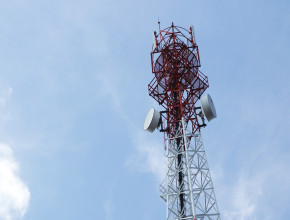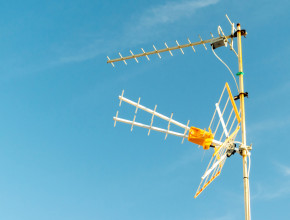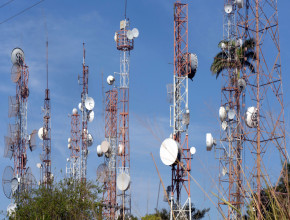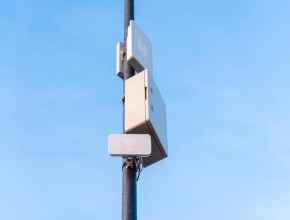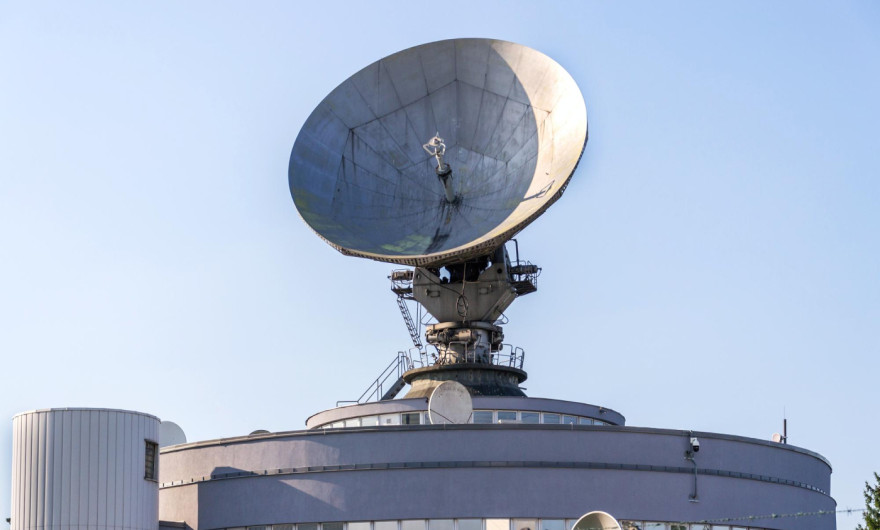
You must have seen many antennas around you on the rooftops of houses, on cell phone towers, hillsides, and many other places. We mistake them all as the same, but they are actually distinct. Today, we will clear up the confusion together as we are gonna differentiate between a satellite dish antenna and a point-to-point dish antenna. By understanding the difference, you will be ready to select the right antenna for your specific requirements. Let's begin!
What is the Satellite Dish Antenna?
A satellite dish antenna is a type of parabolic dish antenna developed to receive and transmit information through radio waves. These usually operate at high frequency bands like Ku-band and Ka-band. It receives broadcast satellite television directly from a geostationary direct broadcast satellite. It is designed to transmit signals to the satellites orbiting high above the Earth. It is commonly used in television, on the internet, in GPS navigation, and in other communication services.
What is the Point-to-Point Antenna?
A point-to-point dish antenna is a type of directional antenna designed to establish wireless communication between two particular places, such as buildings and communication towers. These usually operate on lower microwave frequencies and rely on highly directional signals to achieve reliable, high-speed data transmission. It is commonly used in telecommunication networks to send and receive data, video, and voice signals over long distances without any cables or wires.
5 Key Differences Between Satellite Dish Antenna and Point-to-Point Dish Antenna
On the surface, we can say that a satellite dish antenna establishes a connection to the satellite in space, while a point-to-point antenna links two points on the land. But to know the actual key distinctions, we need to dive deeper into the technicalities of both. So here are the top 5 differences between a satellite antenna and a point-to-point dish antenna:
Frequency Bands
Frequency is the crucial factor in antenna performance it directly impacts its speed and reliability. Satellite antenna usually functions in the high-frequency bands, like Ku band( 12-18 GHz) and Ka band (26.5-40 GHz). These high-band frequency range makes them ideal for TV broadcast, live streaming services, and internet connections for homes and offices. Usually, signals at such high ranges are very sensitive to environmental conditions, which is why we notice weak TV signals during storms or heavy downpours.
On the other hand, point-to-point antenna primarily uses microwave frequencies like 2.4 GHz, 5 GHz, and 6 GHz bands, as well as higher bands 11 GHz and 23 GHz. These frequencies provide a strong and reliable connection over a land area several kilometers. Point-to-point antennas operate in low low-frequency range, so they work well in harsh weather conditions.
Different Roles
If you need wireless internet connectivity in remote locations, a satellite dish antenna works the best for it. These antennas can communicate with the satellites thousands of kilometers above Earth’s equator. Satellite antennas are widely used for internet connectivity, satellite TV services in remote areas, emergency communication in disasters, and more.
On the other hand, a point-to-point dish antenna doesn't send signals to space; it transmits and receives signals between two antennas on the ground only. It works best for ensuring campus-wide connectivity to universities and large industrial areas, linking cellular network towers, creating private broadcast networks for businesses, and more.
Physical Structure
At first glance, a satellite dish antenna and to point-to-point dish antenna look identical, but if one analyzes them closely, there are some key differences. The satellite antenna has a concave, parabolic shape. The size can vary significantly according to the purpose, for instance, from 60 cm to several meters.
The point-to-point dish antenna also has a parabolic design, but it is a highly directional antenna. But it is typically smaller and used for a localized connection between two specific antennas. They are made up of premium quality, durable materials to provide resistance to harsh environmental conditions.
Mounting and Alignment
A satellite antenna requires a stable and precise mounting structure. The mounting structure should have a clear view of the sky and should be unobstructed. Its alignment involves the adjustment of azimuth (horizontal direction), elevation (vertical angle), and polarization (angle on the signal's electric field) to match the specific satellite’s position in the sky.
In case of a point-to-point antenna, it should also be mounted high with minimal obstructions to avoid interference. The mounting sight should be carefully selected, taking into consideration the line of sight of the receiving antenna. There should be precise alignment, pointing the antenna directly to the receiving antenna. These antennas require accurate aiming to maximise the signal strength.
Connectivity and Interfaces
A satellite antenna is used to connect with the orbiting antenna, ensuring broader coverage but with a more complex setup. It interfaces with satellite communication systems, which include the outdoor unit, the indoor unit, and LAN. For instance dish antenna is used for television and internet access in rural or remote areas.
A point-to-point antenna establishes a direct, strong connection between the two specific locations. It usually connects directly to network equipment via Ethernet cable or wireless interfaces. For example, they are used in connecting two buildings across the street.
Conclusion
Both satellite antennas and point-to-point antennas play a pivotal role in wireless connectivity. Though some people find the two antennas the same but they are designed to serve different functions. Satellite dish antennas are necessary for receiving signals from the satellites and getting access to the internet and TV. A point-to-point dish antenna is necessary for ensuring smooth signals between two specific locations. Making a choice between a satellite dish antenna and a point-to-point dish antenna completely depends on your specific requirements and the environment you are working in. Keeping in mind the key differences stated above can significantly ease your decision-making. The differences can help you achieve your operational goals in a more effective way.


